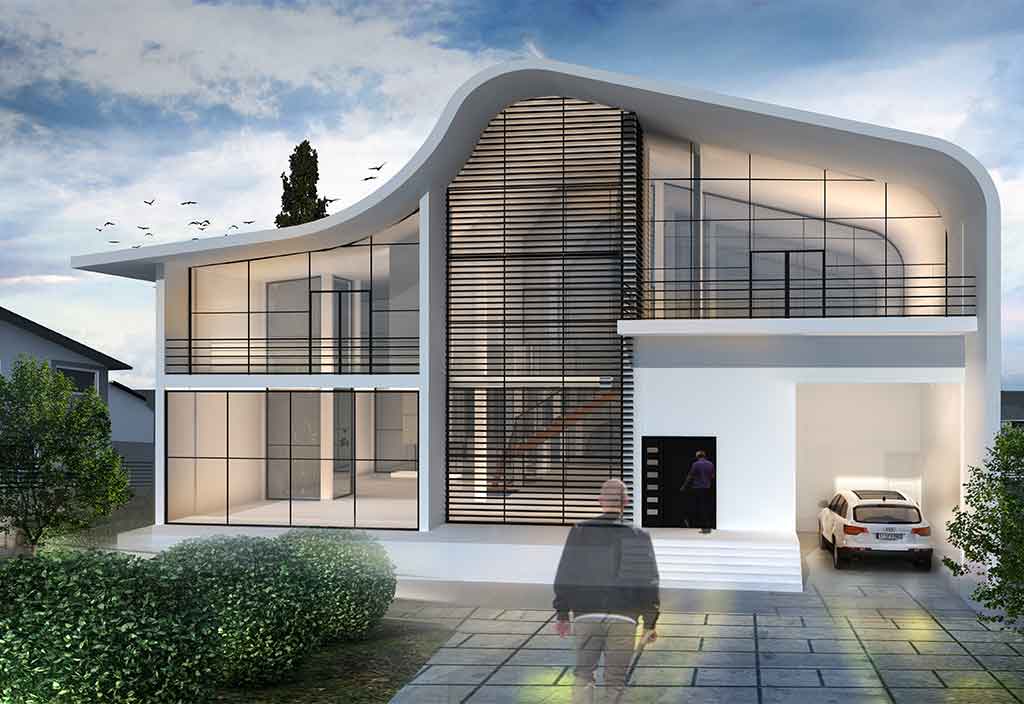

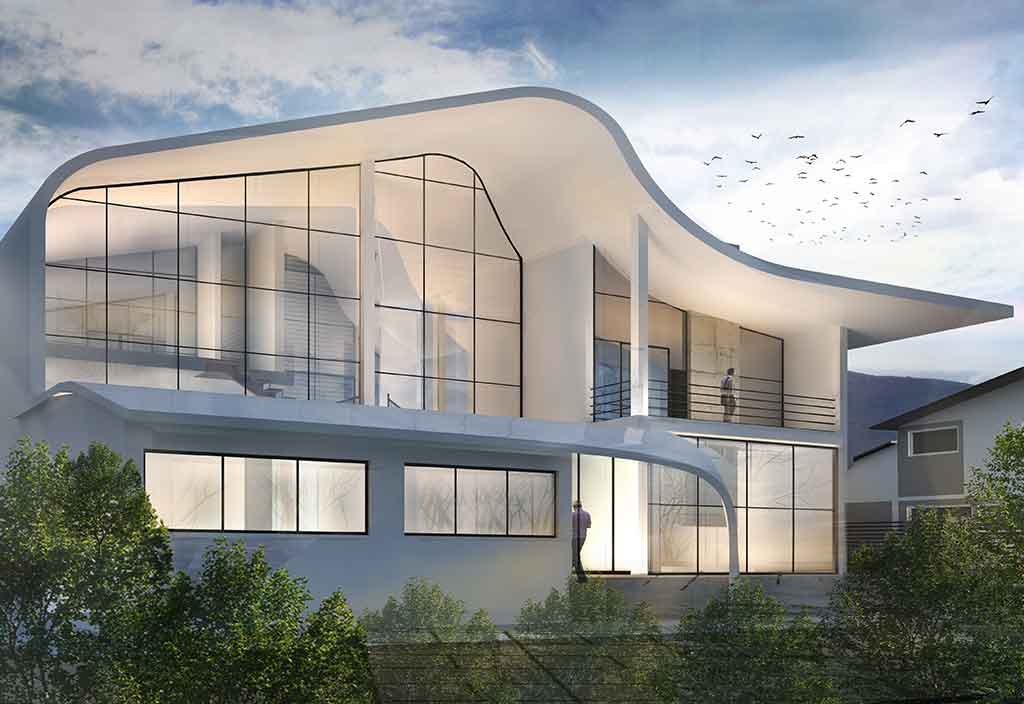
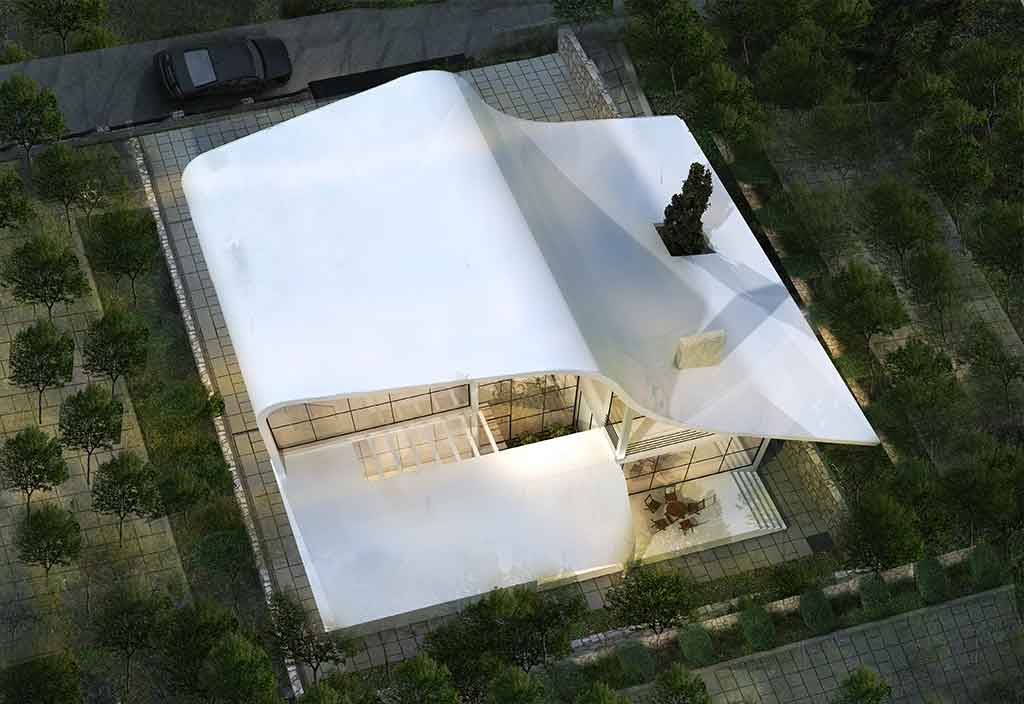
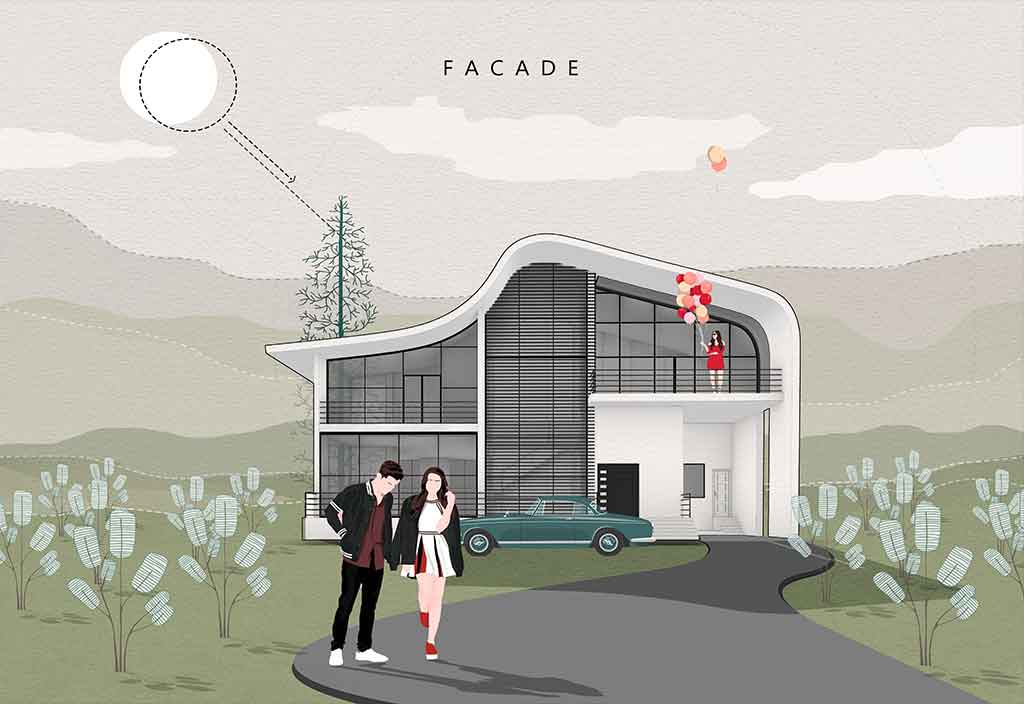
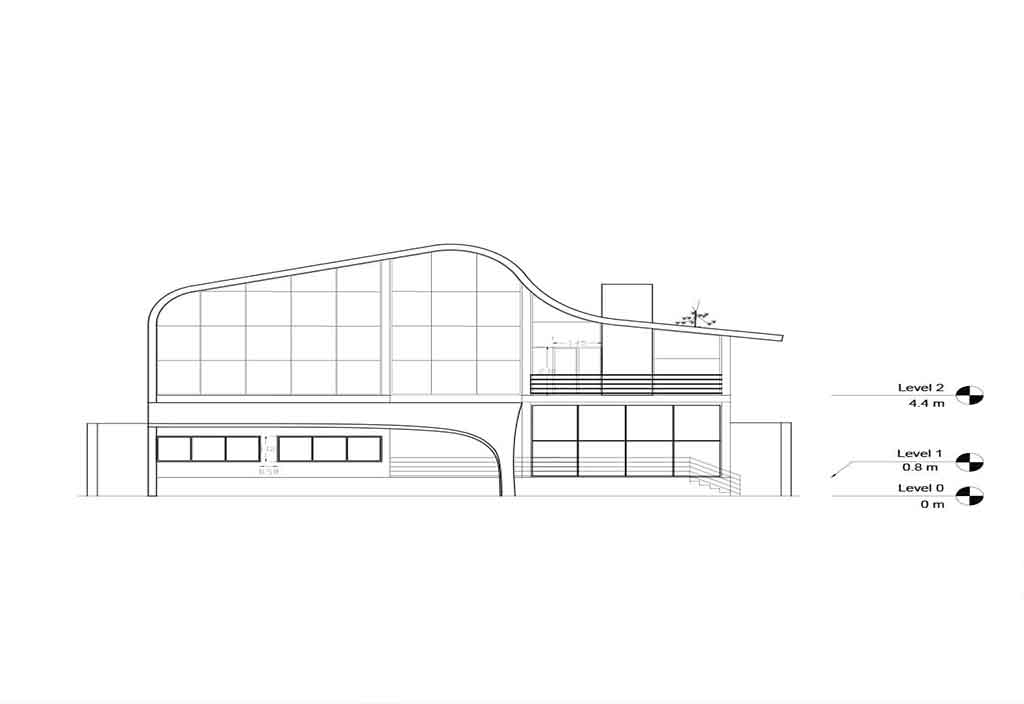
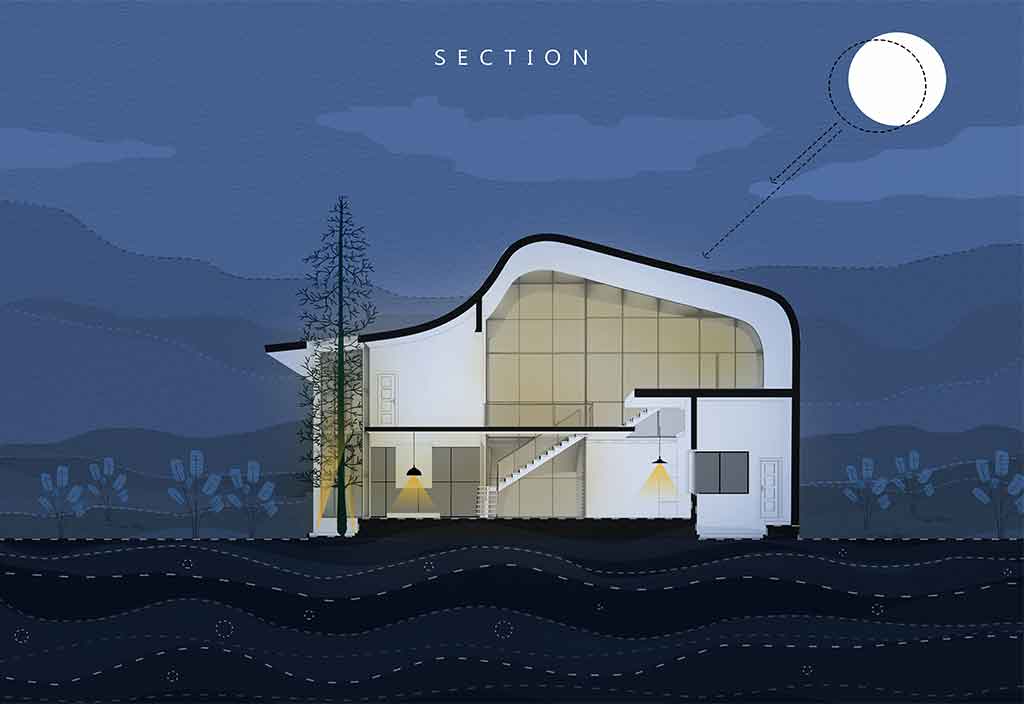







MAHMOUD-ABAD VILLA
Mazandaran | Mahmoud-abad | 2016
The clients imagined their villa with large windows, wood-burning fireplaces, spaces with exceptionally great sees, a private yard, and an expansive porch. The lady was interested in classic luxurious villas, whereas the gentleman was interested in intimate spaces and a cozy feeling. The construction of the villa had been planned in the verdant environs of Mahmudabad. The project design was bestowed upon us.
In the process of designing the exterior of the house, great emphasis was placed on factors such as the local climate and architecture. The aim was to conceive of the most basic representation of a typical northern dwelling. Despite the presence of a sloping roof, we wanted to show a new and special form. The imagery depicting the topography of the terrain and the encompassing vista was observed.
We imagined green mountains in the context of the villa. After extensive sketching, our research has identified the coveted incline within a smooth and supple terrain that ascends with a subtle gradient, descends with a more pronounced degree, and ultimately transitions to a lower slope and state of placidity. A hill that felt as if it did not end and could continue to extend slowly and gently.
Proceeding into the realm of interior design, our mission was to create a desirable space in accordance with the client's wishes but based on our architectural taste and expertise. So we ignored the classic idea and looked for a space that would create the desired sense of glory that the lady wanted from the villa. The idea was to have two vertical glass facades in the axis of the villa, facing each other, and in this part, the ceiling height in this particular section is designed to be equivalent to that of a two-story building. Upon entering the designated entrance space, the audience is presented with an expanse characterized by ample illumination, high ceilings, and a panoramic perspective of the surrounding natural environment. The vast expanse not only exuded grandeur but also evoked a fundamental feeling of harmony with the natural world. But such a space would functionally divide the villa into two parts, In order to enable circulation between these sections, we devised a bridge that was both transparent and crafted from glass. Notably, this architectural element provided a unique experience for those crossing it and observing it from the lower level. on the other hand, the bridge served as an effective solution that did not impede the intended openness and luminosity of the space. The east side was further developed to establish a comfortable area for the installation of a wood-burning fireplace. We extended the chimney of the fireplace and showed it strongly in the view of the upper floor. On the other hand, on this side of the building, we considered a glass cube around the axis of the bridge, which embraces the cypress and takes it up to the second floor and above the roof, thereby enhancing the integration of natural elements within the architectural structure. We defined the east side of the plan as one floor high to have volume diversity. In this way, the dining room received light from the ceiling and the sloping roof of this part extended the volume and created a canopy for a private courtyard. A barbecue was placed in this yard and created a cozy atmosphere for family gatherings.
In order to access the upper level of the villa, a luminous staircase was considered in the middle part of the villa and connected to the southern glass facade, which leads the audience to the upper floor. After crossing the bridge, you come to a corridor with bedrooms on either side and a glass cube, and evergreen cypress on the opposite axis. Upon this level, there was a terrace with a high ceiling. The terrace, whose wall and ceiling were split by glass lighting and displayed a boundless view of the sky and the trees on the side. On the opposing side of the bridge, a set of stairs encircling a tree enveloped by Jan Bana led to "Shahneshin" or the main hall.
An evergreen tree, which was located in the ax of the opposite tree, passed through the heart of the building and split the roof, and went through it towards the sky and light. This glass cube, where the tree was located, brings light and greenery into the building. He passed the stairs and reached a space that led to a large terrace with a view of the mountain and the north of the building. A terrace with a barbecue and a semi-open terrace experience.
Type: Residential
Location: Mahmoud-abad, Mazandaran, Iran
Client: Eng Sahebkar
Design Team: Hasht Architects
Area: 750 square meters
Status: Designed
Date: November 2016